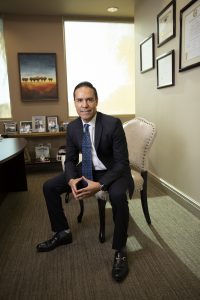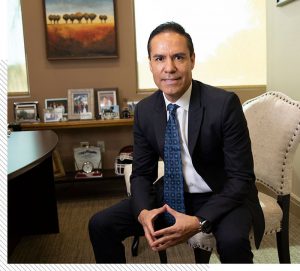It seems that nowadays young people publish their entire lives on social media. A young person told me recently, why would you do something interesting and not post on social media? In the past, when I had to blow off steam about something that happened at school or with a teacher, I would call a friend and vent. Today’s teens vent using their social media accounts, which they forget is published on the world wide web for everyone to see. Recently, the United States Supreme Court reviewed a case where a student decided to blow off steam on her social media account that, according to the school district, caused a substantial disruption and, thus, disciplined the student.
In Mahanoy Area School District v B.L., a female teenaged student posted a series of expletives criticizing the cheer and softball programs on her Snapchat account. She did not use school district resources or post during school time. The student had 250 friends on Snapchat and one of those students took a picture of her post, which was disseminated to other students. The post eventually made its way to several moms and one of them was the cheer sponsor. After her post was widely disseminated, the sponsor banned the student from the cheer squad for 1 year, which triggered a First Amendment lawsuit that was filed against the school district, which eventually made its way to the United States Supreme Court.
The Court ruled in favor of the student because of three (3) chief reasons: (1) off-campus speech normally falls within the zone of parental, rather than school-related responsibility; (2) courts must be skeptical of school’s efforts to control off-campus speech because otherwise the student may not be able to engage in any type of speech ever given school’s control of on-campus speech; (3) our form of government only works with the free exchange of informed public opinion. The Court stated that based on these three factors taken together, the school’s ability to govern off-campus speech must be limited. The concurring opinion issued in the Mahanoy case issued a profound statement in regards to the regulation of speech that occurs off-campus: “But when a public school regulates what students say or write when they are not on school grounds and are not participating in a school program, the school has the obligation to answer the question with which I began: Why should enrollment in a public school result in the diminution of a student’s free-speech rights?”
A silver lining in this case is that the Court did state, in clear terms, when a school district could absolutely regulate off-campus student freedom of speech: “[the] types of off-campus behavior that may call for school regulation…..include serious or severe bullying or harassment targeting particular individuals; threats aimed at teachers or other students; the failure to follow rules concerning lessons, the writing of papers, the use of computers, or participation in other online school activities; and breaches of school security devices, including material maintained within school computers.”
In Justice Thomas’ lone dissent, he argued that public schools have historically been able to discipline students in similar cases like the facts present in the Mahanoy case. He stated that the correct standard to regulate off-campus student speech should be as follows: “A school can regulate speech when it occurs off-campus, long as it has a proximate tendency to harm the school, its faculty or students, or its programs.” Justice Thomas further elaborated on the doctrine of “in loco parentis,” which means that school employees stand in the place of their students’ parents when they are attending school or participating in a school-related activity. According to Justice Thomas, under the historical doctrine of in loco parentis, “No one doubted the government’s ability to educate and discipline children as private schools did including ‘through strict discipline for behavior the school considered disrespectful or wrong’”
While the Mahanoy case did not make “new law,” this case exemplifies how a bad set of facts can make bad law. The student in the Mahanoy case was punished by being removed from the cheer team for a whole year due to her Snapchat post, which some of the some of the Justices had a big problem with during oral argument. Further, the Court referred to the Tinker standard, which does allow school districts to regulate off-campus student speech that causes or likely to cause a substantial disruption to school activities. The problem the Court found with the facts in the Mahanoy case was as follows: “we can find no evidence in the record of the sort of ‘substantial disruption’ of a school activity…[r]ather, the record shows that discussion of the matter took, at most 5 to 10 minutes of an Algebra class ‘for just a couple of days’ and that some members of the cheerleading team were ‘upset’ about the [picture].” Further, the Court also found “when one of B.L.’s coaches was asked directly if she any reason to think that [substantial disruption would occur] other than the facts that kids kept asking about it, she responded simply, ‘No.’”
The Mahanoy case leaves many school district employees wondering about the regulation of off-campus student speech. Certainly, when school personnel punishes students for off-campus speech, they need to be mindful that they must prove substantial disruption to school activities if they intend to prevail in a legal challenge. Even the United States Supreme Court acknowledged that off-campus student speech cases will continue, as the Mahanoy Opinion suggests: “We leave for future cases to decide where, when, and how these features mean the speaker’s off-campus location will make the critical difference. This case can, however, provide one example.” Given the plethora of social media posts that young students engage in on a daily, or perhaps, minute basis, school districts will invariably be dealing with disciplining students that cast a negative light on their campus. However, a prudent school district employee should carefully document the “substantial disruption” caused by a student’s post to be able to survive judicial scrutiny.

